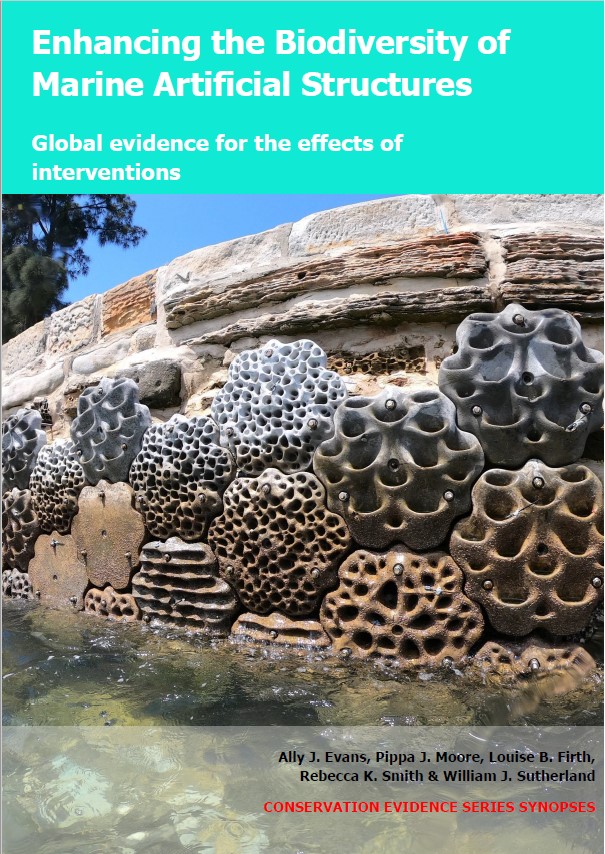Manage or restrict harvesting of species on intertidal artificial structures
-
Overall effectiveness category Awaiting assessment
-
Number of studies: 2
View assessment score
Hide assessment score
How is the evidence assessed?
-
Effectiveness
not assessed -
Certainty
not assessed -
Harms
not assessed
Study locations
Supporting evidence from individual studies
A replicated, randomized study in 2001–2002 on intertidal breakwaters and groynes in five sites on open coastline in the Adriatic Sea, Italy (Airoldi et al. 2005) reported that making access to the breakwaters illegal did not prevent people from harvesting invertebrates and fishes on and around them. At four sites, an average of 0–2 harvesters/2-hour survey were recorded on breakwaters, despite access being illegal. At one site where breakwaters (access illegal) and groynes (access legal) were studied simultaneously, an average of 0–5 harvesters/2-hour survey were recorded. At this site >70% of observations were on groynes, but harvesting also occurred on breakwaters (details not reported). Harvesting species on breakwaters was restricted by making access illegal, but with no apparent enforcement (timing and other details not reported). The number of people harvesting invertebrates and fishes on breakwaters at each of five sites was counted during 2-hour surveys on 152 randomly-selected days between November 2001 and November 2002. Observations at one of the sites included harvesting on groynes, to which access was legal.
Study and other actions testedA replicated, site comparison study in 2006 on six intertidal breakwaters in ports and on open coastline in the Gibraltar Strait, Gibraltar and the Alboran Sea, Spain (Espinosa et al. 2009) found that breakwaters with restricted human access supported similar densities of ribbed Mediterranean limpets Patella ferruginea but with larger average size and more balanced sex ratios, compared with unrestricted breakwaters. Limpet density was similar on breakwaters with restricted access (0–7 limpets/m) and those without (3–7/m) (data not statistically tested). On average, limpets were larger on breakwaters with restricted access (4–7 cm) than without (3–4 cm) in seven of nine comparisons, but were similar in two comparisons (both 4 cm). Limpet sex ratio on restricted breakwaters ranged from 2: 1 (males: females) to 18: 1, while the ratio on unrestricted breakwaters ranged from 41: 1 to 117: 1 (data not statistically tested). Harvesting species on breakwaters was restricted by restricting site access. Three breakwaters were in private or military areas with restricted access and surveillance (timing and other details not reported) while three had no access restrictions. Limpet harvesting was technically forbidden at all sites due to its protected species status. Limpets on breakwaters were counted, measured and sexed during low tide during June–August 2006.
Study and other actions tested
Where has this evidence come from?
List of journals searched by synopsis
All the journals searched for all synopses
This Action forms part of the Action Synopsis:
Biodiversity of Marine Artificial Structures
Biodiversity of Marine Artificial Structures - Published 2021
Enhancing biodiversity of marine artificial structures synopsis





)_2023.JPG)














